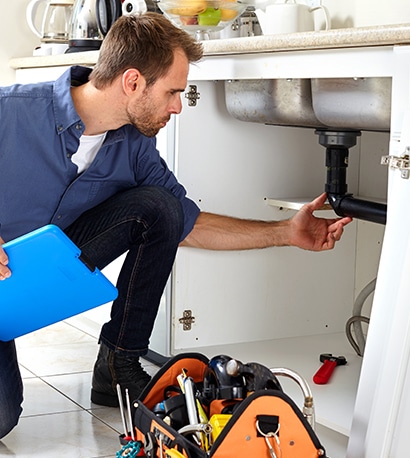The lifespan of a drain system is a critical consideration for homeowners, property managers, and builders. A well-maintained and long-lasting drain system ensures efficient wastewater and stormwater management, preventing costly repairs and property damage. In this comprehensive guide, we will explore the factors that influence the longevity of a drain system, offer maintenance tips to extend its life, and provide realistic expectations for the duration of your drainage infrastructure.

Factors Affecting the Lifespan of a Drain System
Several factors influence how long a drain system can be expected to last. These include:
1. Material Quality
The materials used in the construction of your drain system play a significant role in its durability. Common materials for drain systems include PVC, cast iron, concrete, and more. Quality materials, along with proper installation techniques, contribute to the longevity of the system.
2. Environmental Conditions
The climate and environmental conditions in your region have a direct impact on your drain system’s lifespan. Factors like freezing temperatures, high humidity, and corrosive soil can accelerate the wear and tear of drain components.
3. Maintenance and Care
Regular maintenance is crucial for extending the life of your drain system. Neglecting maintenance can lead to blockages, corrosion, and damage that shortens the system’s lifespan.
4. Design and Installation
The design and installation of the drain system are critical factors. A well-designed and properly installed system is more likely to last longer. An inadequate design or improper installation can lead to drainage problems and premature failure.
5. Ground Movement
In areas with soil instability or ground movement, drain systems can be vulnerable to damage. Shifting soil can cause pipes to crack, sag, or become misaligned, impacting their performance and longevity.
6. Root Intrusion
Tree and plant roots seeking moisture and nutrients can infiltrate drain pipes, leading to blockages, damage, and reduced system life.
7. Water Quality
The quality of the water running through the drain system also matters. Corrosive or heavily sediment-laden water can accelerate the deterioration of pipes and components.
Maintenance Tips to Extend Drain System Life
While the lifespan of a drain system can be influenced by various factors, proper maintenance is essential for maximizing its longevity. Here are some maintenance tips to consider:
1. Regular Inspections
Frequent visual inspections of your drain system can help identify issues early. Look for signs of damage, corrosion, or blockages, and address them promptly.
2. Cleaning and Clearing
Remove debris, sediment, and foreign objects from gutters, downspouts, and drainage channels regularly. This prevents blockages and ensures water flows freely.
3. Professional Inspections
Consider scheduling professional inspections by plumbers or drainage experts. They have the expertise and tools to identify and address potential issues that may not be apparent during regular inspections.
4. Tree and Root Control
If you have trees near your drain system, consider using root barriers or treatments to prevent root intrusion. Prune tree roots away from the system to reduce the risk of damage.
5. Seasonal Maintenance
Adapt your maintenance routine to the seasons. Clear gutters and downspouts before the rainy season, address ice dams in winter and maintain your drainage system according to seasonal needs.
6. Erosion Control
Implement erosion control measures to prevent soil erosion and sediment buildup in your drainage channels and pipes. These measures include stabilizing the soil and incorporating vegetation to reduce erosion.
7. Smart Drainage Solutions
Consider smart drainage solutions that offer remote monitoring and control. These systems can alert you to issues, enabling you to address them before they become major problems.
Realistic Expectations for Drain System Lifespan
The lifespan of a drain system can vary widely based on the factors mentioned earlier. However, here are some general expectations for different types of drain systems:
- PVC Drain Systems: PVC (polyvinyl chloride) drain systems are known for their durability and resistance to corrosion. Well-maintained PVC systems can last 25-40 years or more.
- Cast Iron Drain Systems: Cast iron drain systems are robust but can be susceptible to corrosion. Properly maintained cast iron systems can last 50 years or more.
- Concrete Drain Systems: Concrete drain systems are highly durable but may be affected by ground movement and soil conditions. Well-maintained concrete systems can last 50 years or more.
- Clay Drain Systems: Clay drain systems are vulnerable to root intrusion and damage from ground movement. With regular maintenance, clay systems can last 50 years or more.
- Modern Advanced Systems: Some advanced drainage systems, such as those incorporating green infrastructure, may require ongoing maintenance and updates to adapt to changing environmental conditions. These systems may have variable lifespans.
Regular Maintenance Can Extend Lifespan
It’s important to note that regular maintenance and timely repairs can significantly extend the lifespan of your drain system. Neglecting maintenance can lead to premature failure and costly repairs. By caring for your drainage infrastructure, you can maximize its longevity and ensure effective stormwater and wastewater management.
Conclusion
The lifespan of a drain system depends on several factors, including material quality, environmental conditions, maintenance, design, and installation. While these factors can vary widely, proper maintenance is a key determinant of how long your drain system will last. Regular inspections, cleaning, and professional assessments are essential for preserving the integrity of your drainage infrastructure. By following these guidelines, you can extend the life of your drain system and ensure efficient stormwater and wastewater management for your property.

